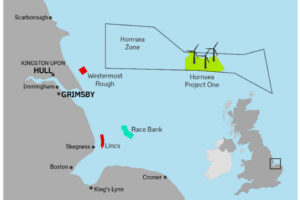The pursuit of renewable energy has been marked by numerous technological marvels, but few are as awe-inspiring as the world’s biggest wind turbine. Standing as a testament to human ingenuity and our commitment to sustainability, this engineering giant is not only a beacon of progress but also a critical player in the fight against climate change. Let’s delve into the details of this colossal machine and what it represents for the future of energy.
Meet the Giant: Vestas V236-15.0 MW
As of now, the title of the biggest wind turbine in the world belongs to the Vestas V236-15.0 MW, a groundbreaking offshore wind turbine developed by the Danish manufacturer Vestas. Announced in 2021 and set for deployment in the coming years, this turbine is a game-changer in the renewable energy sector.
Here are some key specifications that make the V236-15.0 MW a true marvel:
- Blade Length: Each blade is 115.5 meters long, making the rotor diameter a staggering 236 meters. For perspective, that’s roughly two and a half football fields laid end-to-end.
- Height: The turbine’s total height reaches approximately 280 meters, surpassing the Eiffel Tower.
- Capacity: With a capacity of 15 megawatts (MW), a single Vestas V236 can generate enough electricity to power about 20,000 European households annually.
- Efficiency: Its massive size allows it to produce up to 80 gigawatt-hours (GWh) of energy per year, significantly reducing the cost per unit of electricity generated.
Why Size Matters in Wind Energy
The size of wind turbines has been steadily increasing over the years, and for good reason. Larger turbines capture more wind energy, which translates into higher efficiency and lower costs per megawatt-hour. The V236-15.0 MW exemplifies this trend, pushing the boundaries of what’s possible in wind energy technology.
Offshore wind farms, where these massive turbines are typically deployed, benefit particularly from larger designs. Offshore sites often have stronger and more consistent winds, making them ideal for harvesting wind energy at scale. By deploying fewer, larger turbines, operators can reduce installation and maintenance costs while maximizing output.
Environmental and Economic Impact
The deployment of turbines like the Vestas V236-15.0 MW is more than just an engineering feat; it’s a crucial step toward reducing global greenhouse gas emissions. Wind energy is one of the cleanest sources of power available, emitting zero carbon dioxide during operation. As nations strive to meet their climate goals, innovations like this turbine will play a pivotal role.
Economically, the V236-15.0 MW represents a leap forward in reducing the cost of renewable energy. By generating more power per turbine, these giants can lower the overall cost of wind farm projects, making wind energy more competitive with fossil fuels. Additionally, the production and deployment of these turbines create jobs in engineering, manufacturing, and maintenance, contributing to economic growth in regions investing in renewable energy.
Challenges and Future Prospects
While the V236-15.0 MW is a groundbreaking achievement, it’s not without challenges. Transporting and installing such massive components require specialized equipment and logistics. Moreover, as turbines grow larger, the strain on materials and the complexity of maintenance also increase.
Despite these challenges, the future of wind energy looks brighter than ever. Manufacturers are already exploring designs that exceed the capabilities of the V236-15.0 MW, with research focused on improving efficiency, durability, and environmental integration. Floating wind turbines, which can be deployed in deeper waters, are another frontier poised for significant growth.
Conclusion
The Vestas V236-15.0 MW wind turbine is more than just the biggest wind turbine in the world; it’s a symbol of what humanity can achieve when innovation meets purpose. As the world transitions toward cleaner energy sources, such monumental advancements bring us closer to a sustainable future. With every rotation of its massive blades, the V236-15.0 MW reminds us of the boundless potential of renewable energy and the importance of investing in technologies that benefit both people and the planet.


